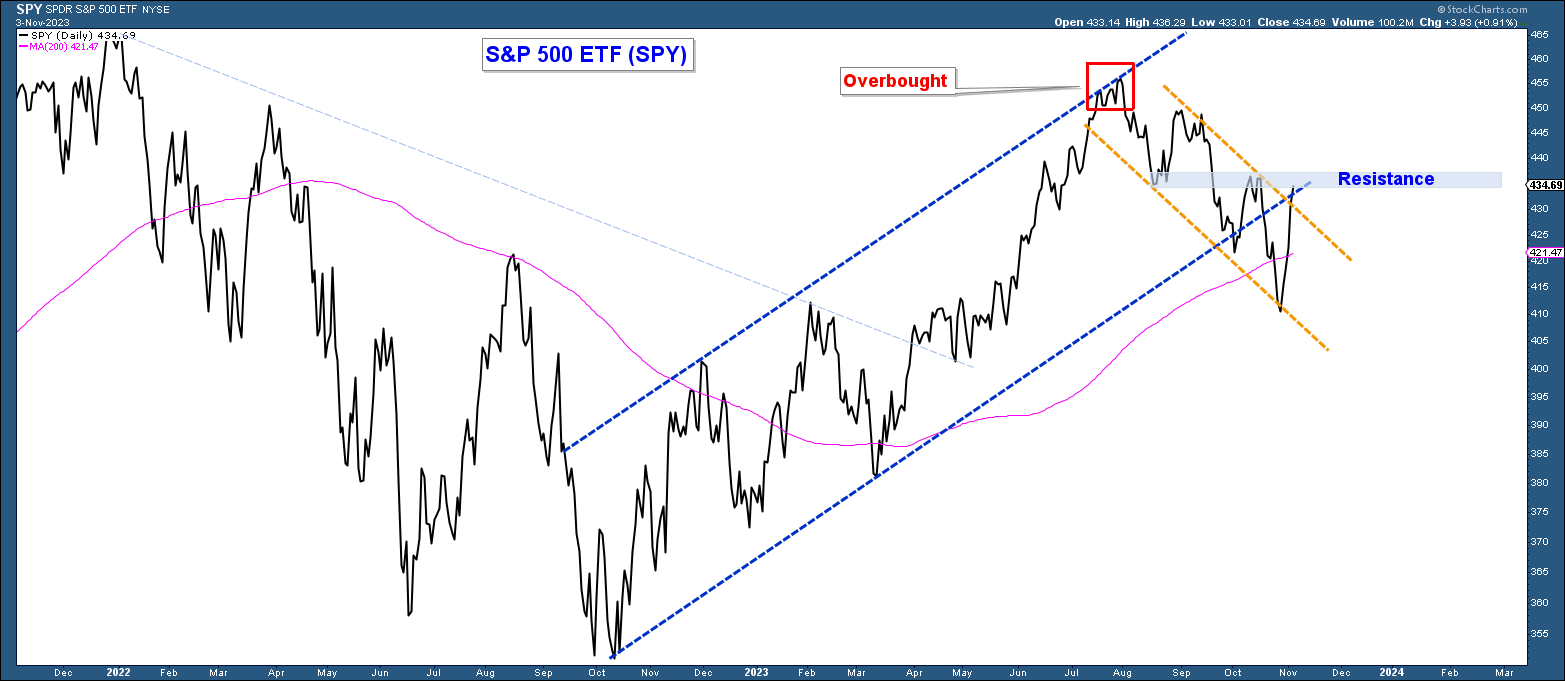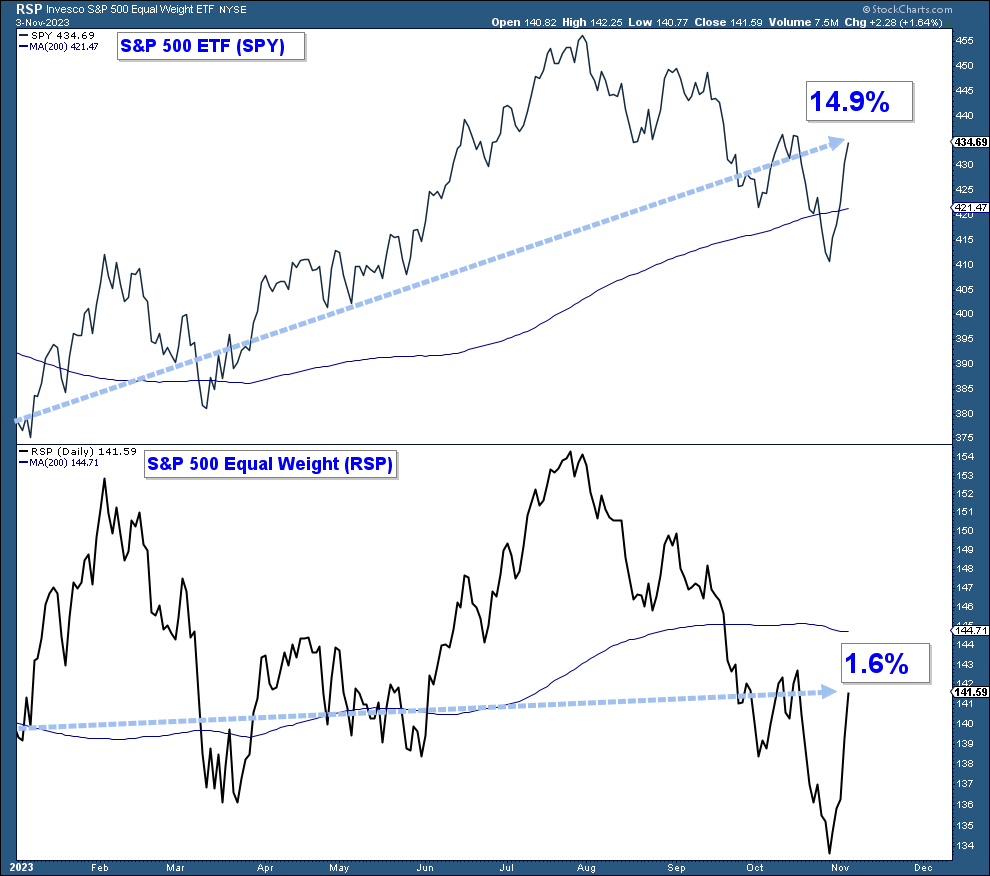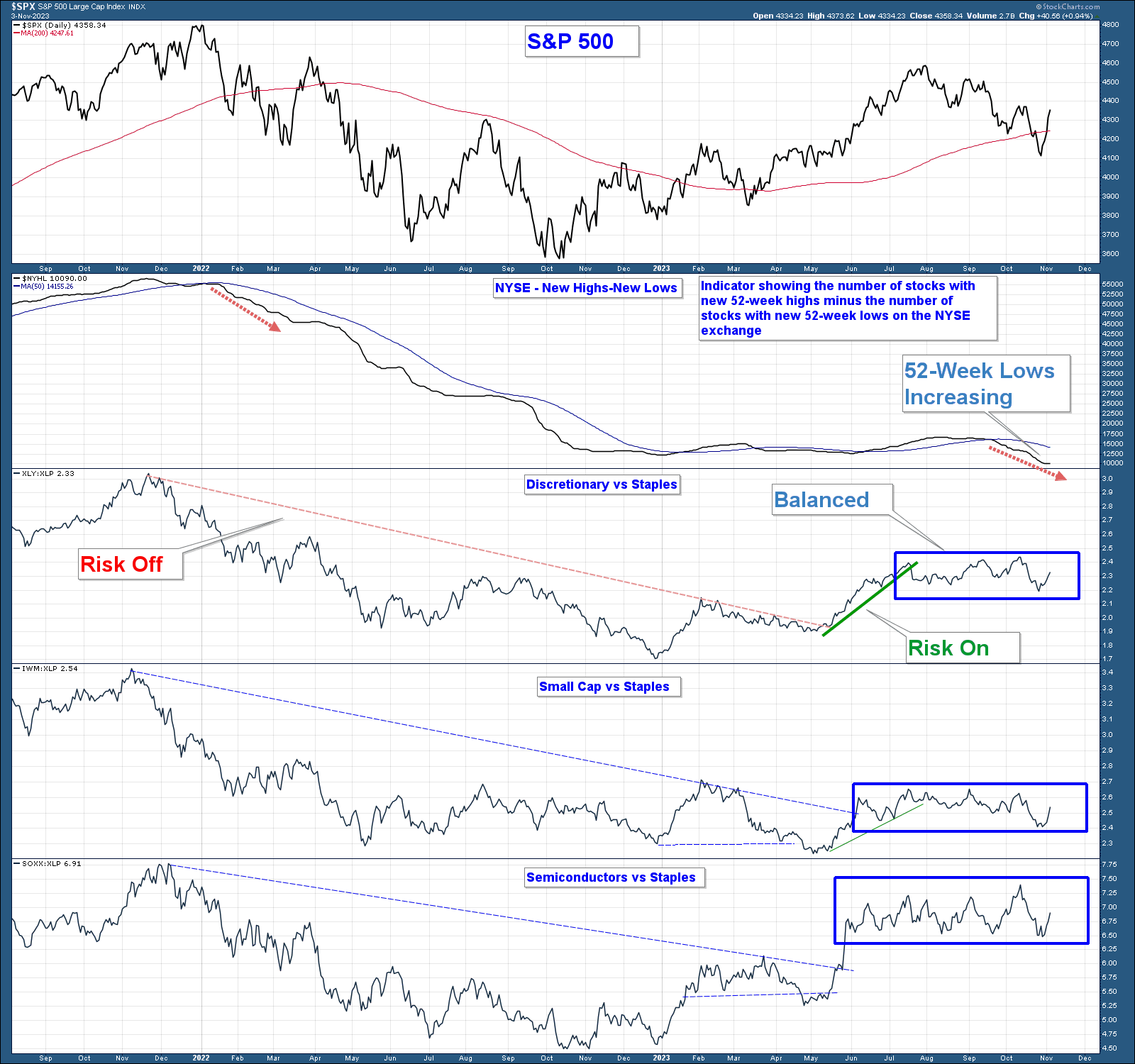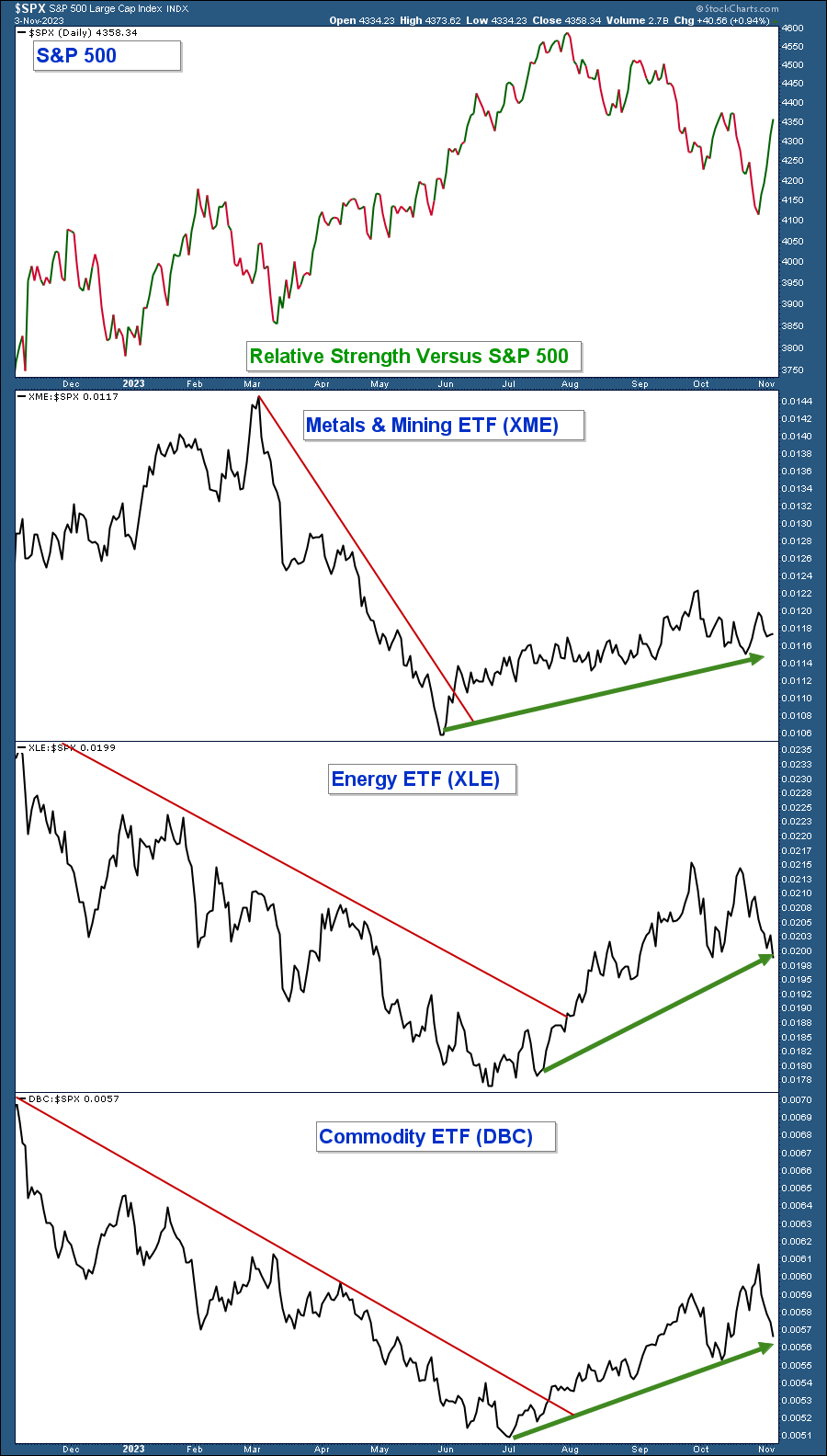In August, the market reached overbought levels and was due for a pullback. Below is the same chart that I presented in that update.
I stated that the market was advancing within an up-trending channel (blue parallel lines) and a pullback to the lower of that channel, if met with heaving buying, would be bullish, meaning the uptrend was still valid.

On the other hand, a move decisively violating the lower line of the channel would be bearish and suggest a change in trend, which means the market would then be in a downtrend.
The latter occurred. Here are my takeaways from the chart below.
- The uptrending channel annotated with blue lines has been violated to the downside. This signals a likely change in trend.
- The current downtrend is defined by the orange downward-sloping lines.
- The index has advanced above its 200-day moving average and is sitting at major resistance.
- The index fell decisively below its trendline then advanced back to that trendline. This pattern is common and typically resolves to the downside.
What I am watching.
- Bullish Scenario – If we are going to get an end-of-year market rally, the market needs to advance strongly above resistance.
- Bearish Scenario – If the index fails to advance above resistance, that would be bearish and further reinforce the market’s current decline.
Market Breadth
Market breadth has primarily been negative. A handful of mega-cap stocks have skewed the performance of the major indexes to the upside. Most major market indexes are cap-weighted and the mega-cap stocks within those indexes have an outsized weighting on their performance.
Below is a chart of SPY in the upper panel and an equally weighted S&P 500 ETF in the lower panel. While the S&P 500 is up 14.9% year-to-date the equally weighted index is only up 1.6%
Conclusion: Market breadth is negative.

Risk-On vs Risk-Off
During bullish market environments, investors will bid up prices for riskier stocks. The market is at an inflection point and risk sentiment can give us a clue to the market’s next move.
In the chart below, is the S&P 500 in the upper panel. Below the index, we have the following charts.
- NYSE – New Highs Minus New Lows: This breadth indicator charts the number of stocks hitting new 52-week highs minus those reaching new 52-week lows on a cumulative basis.
- 3 Relative Strength Charts: These charts compare the performance of Consumer Discretionary, Small Cap, and Semiconductor stocks, all considered risk-on indexes to Consumer Staples a risk-off sector. When the line falls it indicates that the risk-on asset is underperforming and when it rises those risk-on indexes are outperforming.
Here are my takeaways from the chart.
- NYSE – New Highs Minus New Lows: Notice how the line has fallen decisively below its 50-day moving average. New lows are starting to overwhelm new highs. This suggests market breadth is negative or bearish.
- 3 Relative Strength Charts: All three charts are trending sideways indicating the market has reached a level of risk equilibrium. A move above this area of consolidation would be bullish and below would be bearish.
Summary: Market breadth is bearish and risk assets are neither outperforming nor underperforming.
Commodity Outperformance Continues
Commodity-related stocks have continued to perform well on a relative basis.
Below is a relative strength chart of three commodity-related sectors/industry groups versus the S&P 500. In the upper panel is a chart of the S&P 500 and in the lower panels are the relative strength charts.
All three have been outperforming the index since June 2023.
Conclusion: Commodity-related stocks continue to outperform the broader stock market.

Summary
The market is at an inflection point. A move higher from here would be bullish if occurring in conjunction with improved market breadth and outperformance by risk-on assets.
On the other hand, if the market is not able to advance above resistance and declines then the market is still in a downtrend and the broader market environment would continue to be bearish in the near term.
Given the majority of the underlying technical evidence is bearish, I believe the odds favor a market decline from here; however, I will keep an open mind and use market data to determine my market thesis.
